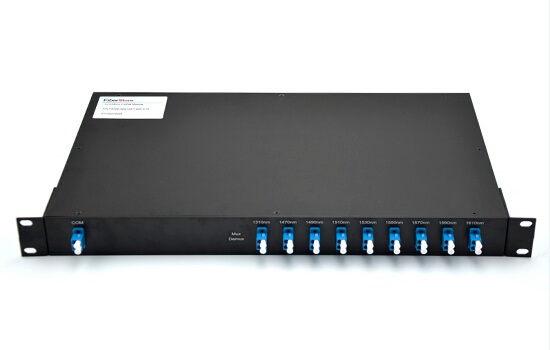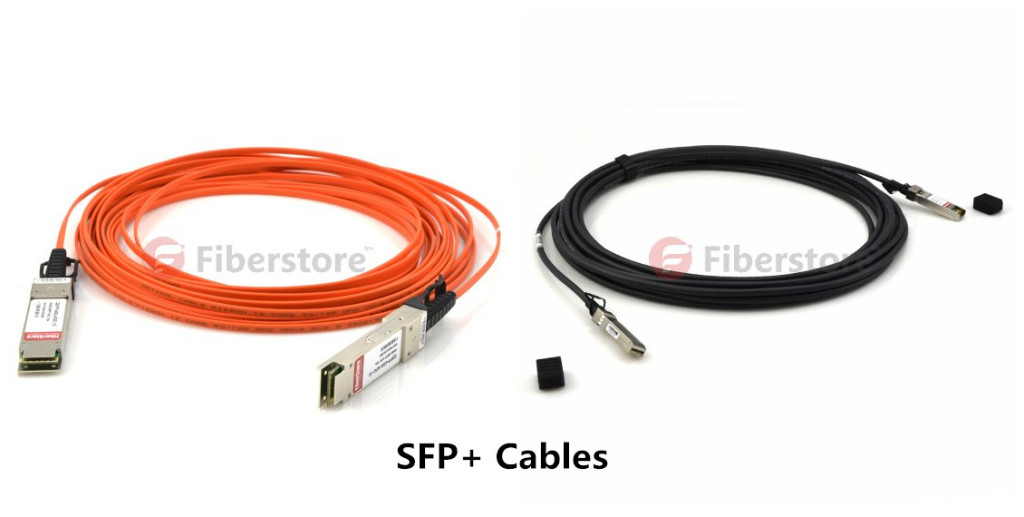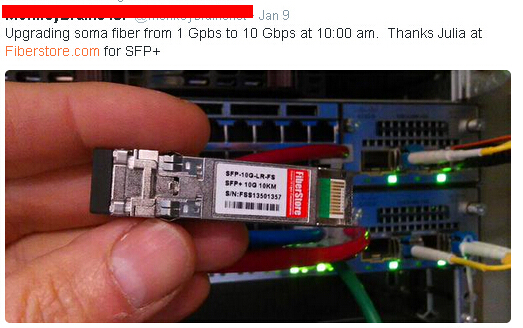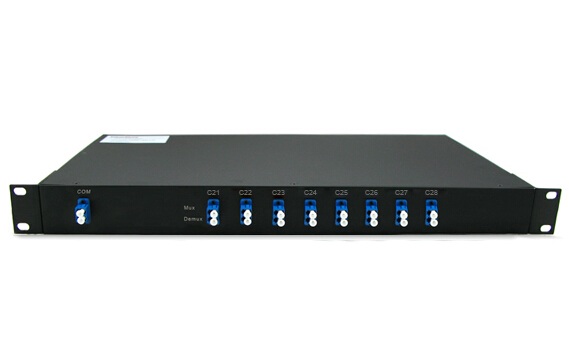-
Introduction
Fiber optic patch cord is also known as fiber optic jumper or fiber optic patch cable. It’s made of two parts: optical connector and fiber optic cable. Inside of the fiber optic patch cord, there is a core with a high refractive index surrounded by a coating with a low refractive index. Due to the transparency of the core and coating’s low refractive index, optic signals could transmit with little loss over long distances. Outside of the coating, there is a protective jacket which could protect the core and coating.Classification
Fiber optic patch cord could be classified into various types by different standards.- By Fiber Optic Connector Structure
Categories classified under this situation are very abundant. And they are LC, SC, FC, ST, E2000, MU, MTRJ, MPO, ESCON Fiber Optic Patch Cord. Here we just briefly introduce LC Fiber Optic Patch Cord.
LC is the short form of Lucent Connector. LC fiber patch cord connector is a push and latch structure, with plastic housing and accurate 1.25mm ceramic ferrule. LC type is a popular kind of small form fiber optic patch cord which reduce the space and it is widely used for densely installation.
- By Transmission Media
According to transmission media, usually fiber optic patch cords include two types: single mode optic patch cords and multi-mode optic patch cords.
Single mode optic patch cords have a narrow core and only carries one single mode of light. Single mode optic patch cords are often used in network connections over long distances. Multi-mode optic patch cords have a much wider core and can carry multiple signal modes of lights. Thus it causes modal distortion. So the transmission distance is limited when using multi-mode optic patch cords.
- By Fiber Core
According to the fiber core, it can be divided into simplex fiber optic patch cord and duplex fiber optic patch cord.
Simplex fiber optic patch cord consists of a single fiber, and is most often used in applications that only require one way transfer. Simplex fiber optic patch cord is available in single mode and multi-mode. Duplex fiber optic patch cord consists of two fibers, and the construction style usually is in a zip cord. This cable is often used in applications that require simultaneous, bi-directional data transfer for duplex communication.
Features
Fiber optic patch cord has low insertion loss and high return loss. It’s quite adaptable to the environment. And the operating temperature covers from -20 degree centigrade to 75 degree centigrade. Besides, it has high durability with more than 500 times mating.Applications
Fiber optic patch cord is commonly applied in fiber optic network. Patch cables are used to connect CATV, telecommunication networks, computer fiber networks and fiber test equipment. And applications include FTTH (Fiber to the Home), premise installations, data processing networks, WANs (Wide Area Networks), LAN (Local Area Network), fiber optic communication system, optical fiber connected and transmitted equipment, defense combat readiness, etc.
 votre commentaire
votre commentaire
-
As the development of computer science technology, 10 Gigabit Ethernet is widely used in our daily life. 10 Gigabit Ethernet means a group of computer networking technologies for transmitting Ethernet frames at a rate of 10 gigabytes per second. Like previous versions of Ethernet, 10GbE can use either copper or fiber cable. However, it requires higher bandwidth. So SFP+ cables are developed. SFP+ cables can provide high performance in 10 Gigabit Ethernet (10GbE) network applications and send 10Gbps data through one paired transmitters and receivers over a thin twinax cable.
Types of SFP+ Cables
Now there are many types of SFP+ cables available for use including the SFP+ direct attach cables, SFP+ active optical cables, SFP+ passive copper cables and SFP+ loopback cables.SFP+ Direct Attach Cable
SFP+ direct attach cable is expected to be the optimum solution for 10G Ethernet reaches up to 10 meters. SFP+ direct attach cable applies a passive twin-ax cable assembly that connects directly into an SFP+ housing. It has a distance limitation of 10 meters and low power, low cost and low latency but more flexible. With inexpensive copper twinaxial cable and SFP+ connectors on both sides, SFP+ direct attach cable provides 10 Gigabit Ethernet connectivity between devices with SFP+ interfaces.SFP+ Active Optical Cable
SFP+ active optical cable can support single channel and high speed data link applications. This kind of cable is able to transmit data at rates up to 10Gb/s and supports single transmission over distances from 1 to 100 meters with its full duplex construction. It is fully compatible with fiber channel, Ethernet, FCoE. SFP+ active optical cable, not like copper based cables, it requires more cable lengths to reduce cable bulk and weight. SFP+ active optical cable is a cost-effective interconnect solution with advantages like enhanced signal integrity, longer cable lengths, management interface, and high speed.
SFP+ Passive Copper Cable
SFP+ passive copper cables are a high performance connectivity solution supporting 10Gb Ethernet and Fibre Channel applications. Compared with SFP+ active optical cable, it has the benefits like lower costs, higher reliability and fewer components (No Active Tx/Rx Components). But it has limited management interface and requires the host to do the work of driving it properly.Advantages of SFP+ cables
Through the brief introductions for the three types of SFP+ cables, it's obvious that SFP+ cables have a lot of advantages. First, SFP+ cables are interchangeable or hot-swappable. That means when devices do not work prematurely, you don't have to completely shut down the system to replace the device. It has high flexibility. Second, it's compatible with other protocols such as Ethernet, SONET/SDH/OTN, fiber channel, and PON standards. This maintains the speed and integrity of signals when transmitting long distances. Third, that SFP+ cable is not too much expensive makes it more and more popular. votre commentaire
votre commentaire
-
SFP transceivers are commonly used and necessary in our daily life. And there are two kinds: single mode SFP and multi-mode SFP. However, maybe most people don’t know these two SFP transceivers are different. The following are the differences between single mode SFP and multi-mode SFP.
Diameter of the Core
Single mode SFP has a small diametral core that allows only one mode of light to propagate. Because of this, the number of light reflections created as the light passes through the core decreases, lowering attenuation and making the signal travel faster.Compared with single mode SFP, multi-mode SFP has a larger diametral core that allows multiple modes of light to propagate. Thus when the light passes through the core, the number of light reflections increases, more data could pass through in a given time.
Transmission Distance
Single mode SFP are affected by waveguide dispersion caused by the light going down the fiber being wider than the core of the fiber. This allows more control of the path of the photons, but gets more influences from micro bends, twists, and stress on the fiber. So it’s often applied in long distance, higher bandwidth runs by Telcos, CATV companies, and Colleges and Universities.Whereas multi-mode SFP are affected by Modal Dispersion, caused because the light rays follow different paths through the fiber and arrive at different times on the other end. Due to the high dispersion and attenuation rate with this type of fiber, the signal will become worse during its transmission over long distances. So multi-mode SFP could be typically used for short distance, data and audio/video applications in LANs. RF broadband signals, such as what cable companies commonly use, cannot be transmitted over multi-mode fiber.
Cost
Single mode SFP costs more than multi-mode SFP. Why does this happen? Because single mode SFP and multi-mode SFP use a different type of light emitting unit. Single mode SFP have fine laser i.e 1310nm or 1550nm. But multi-mode SFP having LED or lower wavelength type light emitting unit. Multi-mode couplers & lasers are a lot cheaper to manufacturer. Single-mode couplers & lasers are tuned & built to a much higher standard and cost a lot more to produce. So single mode SFP is always more expensive than multi-mode SFP.The main purpose of showing these differences is for you to know SFP transceivers better and choose a suitable one. And the two transceivers are identified by colors on the outer jacket. The single mode SFP is yellow or blue, while the multi-mode SFP is orange or aqua.
 votre commentaire
votre commentaire
-
Nowadays, most vendors understand that optical transceiver is largely standardized and interchangeable. But, when user try to use a third-party GLC-SX-MM SFP transceiver plugs into Cisco Catalyst switches that might results in an UNSUPPORTED_TRANSCEIVER error. This paper is goint to discuss the way to handle these errors.

Receive an Unsupported Transceiver Error
According to the message you get, there are some methods to address unsupported transceiver errors. For instance, owners of Cisco Catalyst switches are finding that they are not "supposed to" use any SFPs except those produced by Cisco. If you receive this error, "3750e-sw1(config)#service unsupported-transceiver [1]", you should think about whether the error was a result of customer installation or if it was a defective product. If the product is defective, consider contacting someone who can help with the warranty.
Most error messages arise once the device is not certified. If the third-party device has not been sourced from a channel partner, other issues may arise also. Solving the router issue is not really easy. It often requires a transceiver of the same manufacturer as the router to deal with the issue. This is often the best way to resolve the issue. Although, many designers have used "hack codes" to force the devices to work.
Making Catalysts GLC-SX-MMD Optics Compatible
There are just a couple commands you need to enter in the IOS command line interface. First:
# service unsupported-transceiver
This undocumented command puts up an error message which says, in brief, you'll get no support from Cisco in what you're doing and are risking voiding your warranty if the SFP breaks the Catalyst.
# no errdisable detect cause gbic-invalid
And this command disables the port-shutdown upon insertion of an unsupported transceiver. At this point, your Catalyst should happily accept any good quality SFP you plug into it without giving any more back talk.
Benefits of Third-Party Transceiver Optics
The primary benefit is the cost savings. Generally speaking, the cost of an original brand SFP module is more costly than a 3rd party one. Take Cisco 1000BASE-SX SFP (GLC-SX-MMD) for example, the list price of Cisco is around $ 500.00, however, you can simply find a 3rd party SFP modules which takes a price reduction at up to 90% off. Because transceiver costs are a significant part of the total system cost, it's important for designers to minimize these costs. With the significant savings, designers can reinvest and make their designs better.
Avoiding Unsupported Errors By Choosing Reliable SFP Manufacturers
Keep in mind that it is very necessary to use quality assurance SFP modules. Actually, there are some high quality SFP modules OEM vendors, such as Fiberstore, Inc. You would not worry about the compatibility of the usage. Because there is a perfect system from the production to shipment. All the products are tested before they shipped and ensure the 100% compatible and high quality.
 votre commentaire
votre commentaire
-
With the rapid development of telecommunications, the demand for cable capacity is stronger more than ever. WDM (Wavelength Division Multiplexing) will be the preferred method to meet the needs. WDM systems are divided into different wavelength patterns, conventional/coarse (CWDM) and dense (DWDM). This post aims to make a comparison between CWDM and DWDM.
WDM and It's Working Principle
Wavelength Division Multiplexing is a technology which multiplexes a number of optical carrier signals onto a single optical fiber by using different wavelengths of laser light. This technique enables bidirectional communications over one strand of fiber, as well as multiplication of capacity. A WDM system uses a multiplexer at the transmitter to join the signals together, and a demultiplexer at the receiver to split them apart. With the right type of fiber it is possible to have a device that does both simultaneously, and can function as an optical add-drop multiplexer.
CWDM is the technology of choice for cost efficiently transporting large amounts of data traffic in telecoms or enterprise networks.
DWDM is an optical technology used to increase bandwidth over existing fiber optic backbones.
Comparison between CWDM and DWDM
Channel Numbers
DWDM can fit 40-plus channels into the same frequency range which is twice of CWDM can fit. CWDM is used more often than DWDM due to the cost factor. Now that cabling and transmission has become more affordable, DWDM takes place of CWDM. CWDM is defined by wavelengths, while DWDM is defined in terms of frequencies.
Modulated laser
Unlike DWDM deploys cooled distributed-feedback (DFB), CWDM is based on uncooled distributed-feedback (DFB) lasers and wide-band optical filters. These technologies provide several advantages to CWDM systems such as lower power dissipation, smaller size, and less cost. The commercial availability of CWDM systems offering these benefits makes the technology a viable alternative to DWDM systems for many metro and access applications.
Transmission Distance
Another major difference between the two is that DWDM is designed for longer haul transmission, by keeping the wavelengths tightly packed. It can transmit more data over a significantly larger run of cable with less interference than a comparable CWDM system. If there is a need to transmit the data over a very long range, the DWDM will likely be the priority in terms of functionality of the data transmittal as well as the lessened interference over the longer distances that the wavelengths must travel. CWDM cannot travel long distances because the wavelengths are not amplified, and therefore CWDM is limited in its functionality over longer distances. Typically, CWDM can travel anywhere up to about 100 miles (160 km), while an amplified dense wavelength system can go much further as the signal strength is boosted periodically throughout the run. As a result of the additional cost required to provide signal amplification, the CWDM solution is best for short runs that do not have mission critical data.
CWDM MUX vs DWDM MUX Device

8 channels CWDM Mux
CWDM Optical MUX operates in the 1470-nm to 1610-nm range, which is usually passive device containing a very accurate prism to multiplex eight separate wavelengths of light along a single fiber pair. Passive devices can’t generate or repeat optical signals. The frequency grid for DWDM and the wavelength grid for CWDM systems are defined by the International Telecommnications Union (ITU) standards G.694.1 and G.694.2, respectively.
8 channels DWDM Mux
DWDM Passive MUX modules are made to multiplex multiple DWDM channels into one or two fibers. Based on type CWDM Mux/Demux unit, with optional expansion, can transmit and receive as much as 4, 8, 16 or 32 connections of various standards, data rates or protocols over one single fiber optic link without disturbing one another.
From the comparison above, we can know both the benefits and drawbacks of CWDM and DWDM. If the transmission distance is short and cost is low, then CWDM may be your first choice, that's to say CWDM Mux. On the contrary, you can consider DWDM equipments. For more information about CWDM optical multiplexer and DWDM passive MUX, you can visit Fiberstore.
Originally published at: www.fiberopticshare.com









